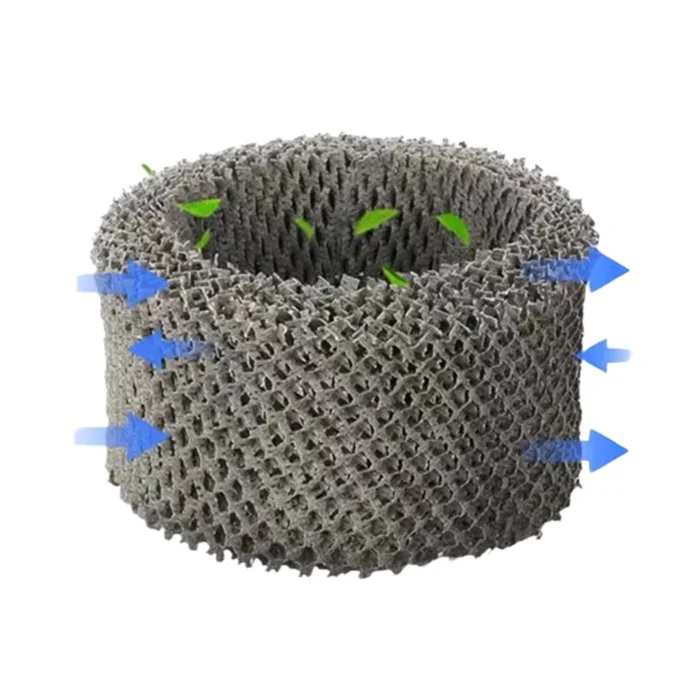Wood pulp fiber wet films have gained significant attention in various industries due to their unique composition and properties. These films are derived from wood pulp fibers and offer a range of advantages, including sustainability, biodegradability, and versatility. In this article, we will delve into the composition and properties of wood pulp fiber wet films, exploring their applications and potential benefits.
I. Composition of Wood Pulp Fiber Wet Films
Wood pulp fiber wet films are primarily composed of cellulose fibers obtained from wood pulp. Cellulose, the main component of plant cell walls, provides strength and stability to the film structure. Additionally, other additives such as binders, fillers, and water-resistant agents may be incorporated to enhance specific properties of the film.

II. Properties of Wood Pulp Fiber Wet Films
1. Biodegradability:
One of the key properties of wood pulp fiber wet films is their biodegradability. As these films are primarily composed of cellulose, a natural polymer, they can be easily broken down by microorganisms in the environment. This makes them an eco-friendly alternative to conventional plastic films, reducing environmental pollution and waste.
2. Water Absorption and Retention:
Wood pulp fiber wet films have excellent water absorption and retention capabilities. Due to the hydrophilic nature of cellulose fibers, these films can absorb and retain a significant amount of water. This property makes them suitable for applications such as moisture control in food packaging or as a medium for plant growth in agriculture.
3. Mechanical Strength:
Wood pulp fiber wet films exhibit good mechanical strength, thanks to the inherent strength of cellulose fibers. These films can withstand moderate stress and strain, making them suitable for various applications that require durability and stability.
4. Barrier Properties:
Wood pulp fiber wet films possess moderate barrier properties against gases and liquids. While they may not provide the same level of barrier as synthetic polymer films, they can still offer sufficient protection for certain applications, such as packaging of dry goods or non-perishable items.
5. Thermal Stability:
Wood pulp fiber wet films have relatively low thermal stability compared to synthetic films. They may undergo degradation or shrinkage at high temperatures. However, with proper formulation and additives, the thermal stability of these films can be improved, expanding their potential applications.
III. Applications of Wood Pulp Fiber Wet Films
1. Sustainable Packaging:
Wood pulp fiber wet films are increasingly being used as an eco-friendly alternative to conventional plastic packaging materials. These films can be utilized for food packaging, reducing the environmental impact associated with single-use plastics.
2. Agricultural and Horticultural Applications:
The water absorption and retention properties of wood pulp fiber wet films make them suitable for agricultural and horticultural applications. They can be used as mulch films, seedling trays, or as a medium for hydroponic systems, promoting efficient water management and plant growth.
3. Biomedical and Pharmaceutical Applications:
Wood pulp fiber wet films have shown potential in biomedical and pharmaceutical applications. They can be used as drug delivery systems, wound dressings, or as scaffolds for tissue engineering due to their biocompatibility and biodegradability.
4. Paper and Textile Industry:
Wood pulp fiber wet films can be incorporated into papermaking processes to enhance the strength and water resistance of paper products. Additionally, these films can be used as binders or coatings in the textile industry to improve fabric properties such as water repellency or flame retardancy.

Conclusion
Wood pulp fiber wet films offer a sustainable and versatile alternative to traditional plastic films. Understanding their composition and properties is crucial for exploring their applications in various industries. With their biodegradability, water absorption and retention capabilities, mechanical strength, and moderate barrier properties, these films have the potential to revolutionize packaging, agriculture, biomedical, and textile sectors. Embracing wood pulp fiber wet films can contribute to a greener and more sustainable future.
Sustainable Solutions: Wood Pulp Fiber Wet Film in Eco-Friendly Packaging
